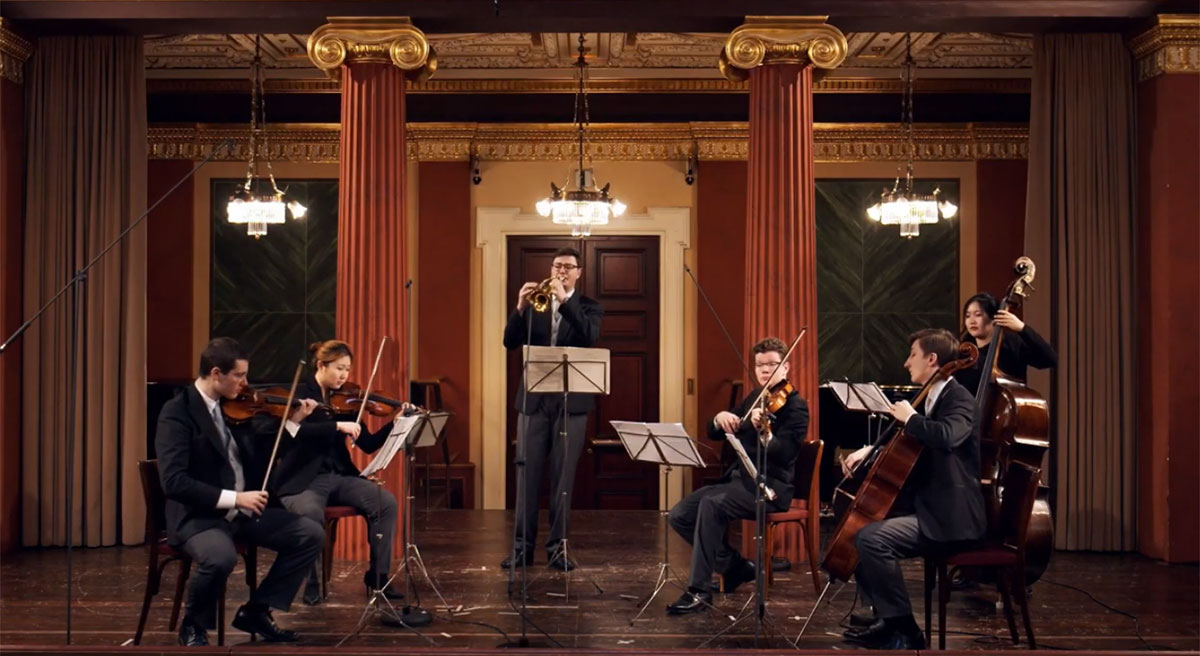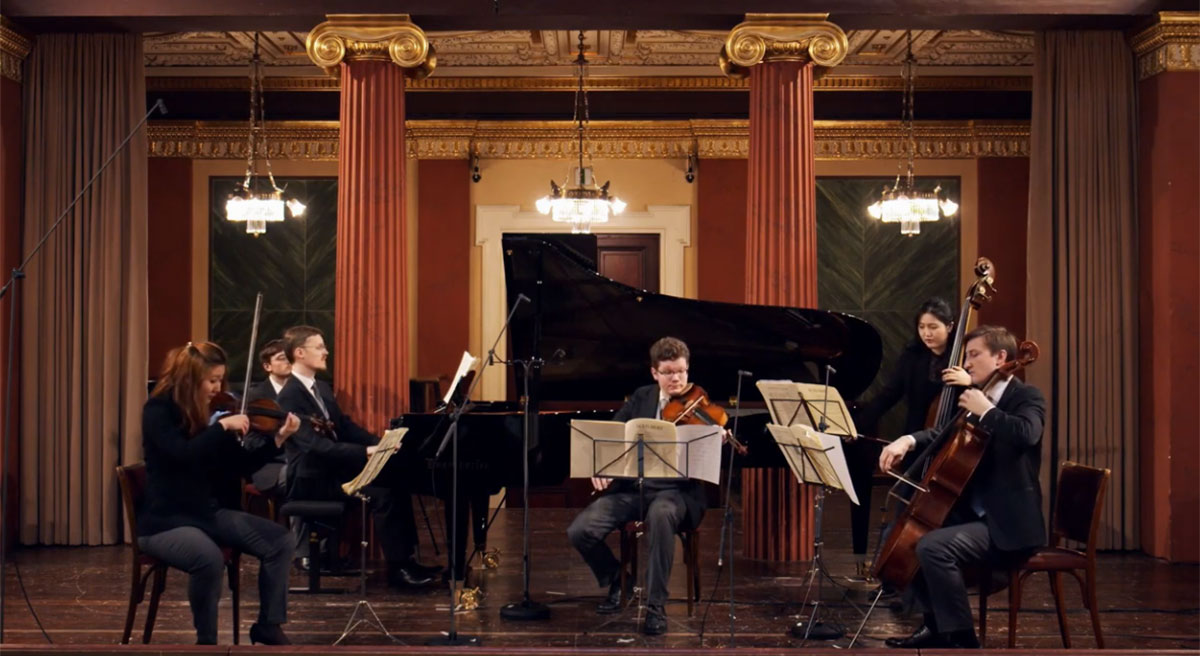A Trumpet Concerto
Joseph Haydn, Trumpet Concerto in E-flat major
Joseph Haydn (1732-1809) was an Austrian composer of the Classical period known for being instrumental in the development of chamber music and the ‘Father of the Symphony’ and ‘Father of the String Quartet’. From humble beginnings where there often was not enough to eat, he left home at the age of 6 to study the harpsichord and violin before moving to Vienna at age 8 to become a chorister at St. Stephen’s Cathedral. At 17, he began a career as a freelance musician and struggled to find consistent work until receiving an aristocratic patronage at age 24. In 1761 he began a challenging but rewarding position with the Esterházy Family in Austria and Hungary where he composed, ran the orchestra, played chamber music and mounted operatic productions. In 1779, at age 47 he renegotiated his contract with the family and was allowed to compose for others and sell his work to publishers – leading him to achieve financial security for the first time in his life. The ability to publish was a catalyst to Haydn’s achieving international popularity and recognition as Europe’s leading composer. Two extended trips to London and the symphonic and operatic works he created while there in the early 1790’s solidified his contemporary and historical status. Upon his return to Vienna in 1795, he resumed his role as the Kapellmeister for the Esterházy musical establishment on a part-time basis, composed, and performed in public until his retirement in 1803.
Joseph Haydn composed the ‘Trumpet Concerto in E-flat major’ for his friend and trumpet virtuoso Anton Weidinger in 1796. Considered possibly ‘Hadyn’s most popular concerto’, it is a favorite of trumpet repertoire. Typical of a Classical period concerto, this work is composed in three movements:
- Allegro (sonata)
- Andante cantabile (A-B-A)
- Finale - Allegro (rondo)
Trumpets prior to 1830 were valveless and could only play a limited number of harmonic notes by altering the vibration of the lips. This meant that most of the harmonic notes were in the higher registers. Interestingly, Anton Weidinger was one of many of the mid- classical period to try to develop trumpets using valves to expand the range to middle and lower registers. Haydn’s Concerto includes melodies to exploit the capabilities of this new instrument. Weidinger’s trumpet, which featured holes covered with flute-like keys, was not a long-term success as it produced very poor sound quality, but Haydn’s specially composed Concerto, which included notes across the full range, has benefited from the further evolution of the trumpet.
The Trout Quintet
Franz Schubert, Piano Quintet in A Major, D. 667, 'The Trout Quintet' (Forellenquintett)
Franz Peter Schubert (1797 – 1828) was an Austrian composer of the late Classical and early Romantic eras. He was a bright child whose intellect and musical abilities quickly exceeded that of his teachers. His first violin lessons were at the age of eight and he was also accomplished at the viola and piano. Despite his short life, he was very prolific – composing over 1500 works, including over 600 vocal works, seven complete symphonies, sacred music (despite being agnostic), operas and a large body of piano and chamber music. Beethoven recognized Schubert’s talent, saying ‘Truly the spark of the divine genius resides in this Schubert!.....he will make a great sensation in the world’. Schubert valued this praise and gave his only concert of his own works on the first anniversary of Beethoven’s death on March 26, 1828. He was admired and championed by other composers in Vienna – Felix Mendelssohn, Robert Schumann, Franz Liszt, and Johannes Brahms – but appreciation of his music accelerated in the decades after his death and he is now considered among the greatest composers of Western classical music.
‘The Trout Quintet’ or the Piano Quintet in A major, D. 667, was composed in 1819 when Schubert was 22 years old, but it was not published until 1829, a year after his death at 31. It was written for the piano, violin, viola, cello and double bass as opposed to the usual piano quintet of a piano and four violins. Commissioned by a wealthy music patron and amateur cellist, Sylvester Paumgartner, Schubert includes variations of his Lied ‘Die Forelle’ – ‘The Trout’ in the fourth movement. The Quintet consists of five movements:
- Allegro vivace
- Andante
- Scherzo: Presto
- Andantino – Allegretto
- Allegro guisto
‘The Trout Quintet’ has earned its importance in classical chamber music from its use of original and harmonic language rich in mediants, chromaticism and its timbral characteristics. It also is known for its unique sonority of chamber works for piano and strings – primarily for the piano as substantial portions are played in the piano’s highest register.



